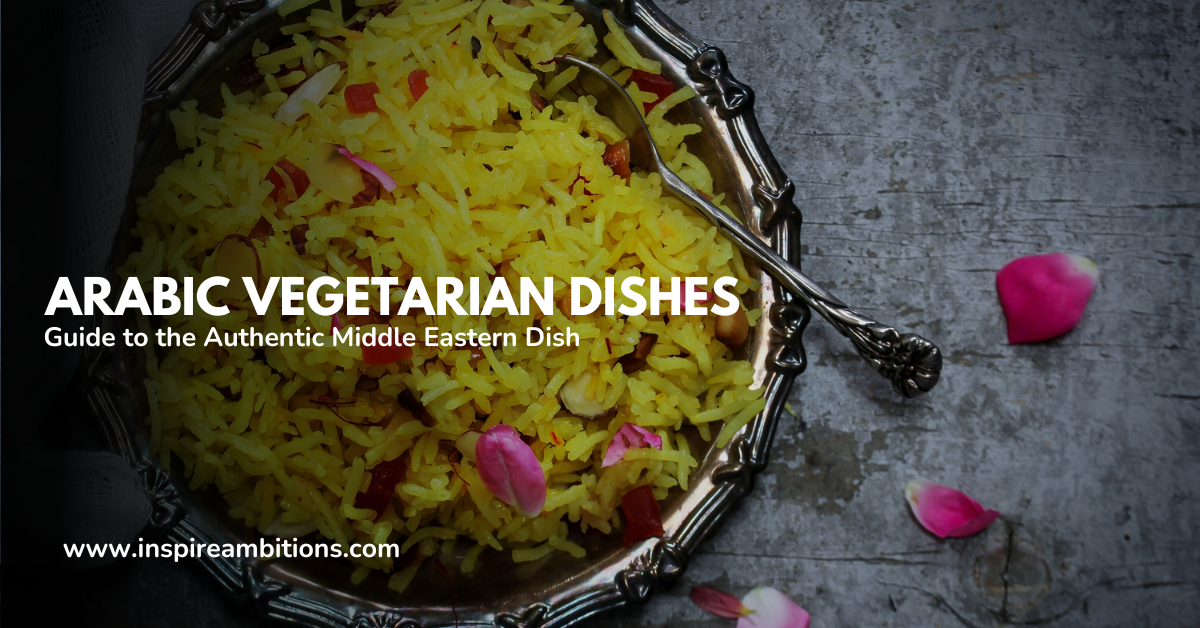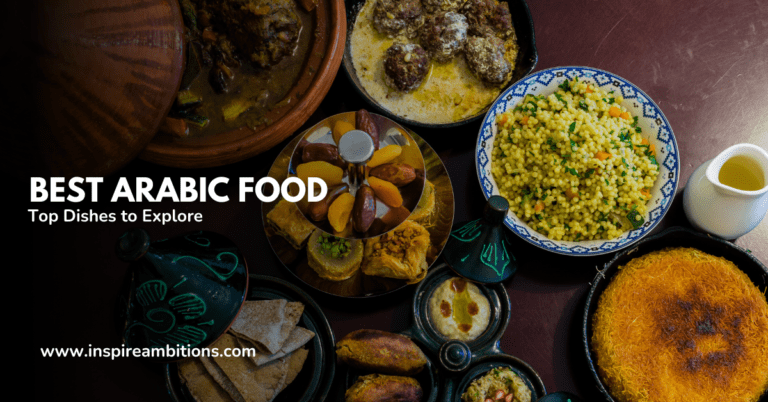Arroz Amarelo Árabe – Um Guia Completo para o Prato Autêntico do Oriente Médio
Arabic yellow rice is a vibrant and flavourful dish that is a staple in Middle Eastern cuisine. This delicious and aromatic rice gets its distinct yellow colour from spices such as turmeric, saffron, or Curcuma.
Not only does this add a visual appeal to the dish, but it also imparts unique flavours that are cherished in both traditional and contemporary culinary practices across the globe.
Prepared using basmati rice, a long-grain variety known for its fragrant aroma, Arabic yellow rice is often accompanied by various proteins, vegetables, and legumes, elevating it from a simple side dish to a nutritious and hearty meal.
For instance, you can include chickpeas to add both nutrients and texture, and you may also enhance the dish further by incorporating spices like cinnamon, ginger, and pepper. As a versatile staple, this rice dish can be enjoyed in a multitude of ways, allowing you to explore the rich flavours and culinary traditions of the Middle East in your kitchen.
History of Arabic Yellow Rice
Arabic yellow rice, also known as Palestinian kudra, is a popular and flavourful side dish across the Middle East. Its origins can be traced to the diverse culinary traditions of the region. Owing to its widespread popularity, each region has developed its unique spin on the dish.
The primary ingredients that lend Arabic yellow rice its distinct yellow hue are saffron, turmeric, or annatto. These ingredients have played important roles in the culinary and cultural heritage of the Middle East, which explains their incorporation into yellow rice.
Saffron, for example, has long been a symbol of wealth and luxury, due to the labour-intensive process involved in harvesting the prized threads.
Alongside the vibrant spices, Arabic yellow rice often features equally appetising additions. These may include chickpeas, vegetables, nuts, or raisins, which further contribute to the dish’s rich tapestry of flavours and textures. It is common for yellow rice to be served with grilled meats, stews, or other delectable accompaniments, making for a well-rounded, hearty meal.
As it spread across the Middle East and beyond, Arabic yellow rice adapted to suit local tastes and ingredients. This has given rise to a multitude of variations that cater to different palates. Despite these regional differences, the dish has maintained its core elements and remains a cherished part of Middle Eastern cuisine.
Ingredients of Arabic Yellow Rice
Here is the list;
Primary Ingredients
To create an authentic Arabic Yellow Rice, you should start by gathering the following primary ingredients:
- Arroz basmati – 1 cup, soaked for 30 minutes in enough water: Basmati rice gives the dish its fluffy and fragrant texture and is a staple in Middle Eastern cuisine.
- Turmeric powder – 1/2 tsp or saffron – 1 pinch: These natural food colourings are essential for giving your yellow rice its signature vibrant hue.
- Butter – 1 tbsp or azeite: Providing a rich flavour base and helping the rice cook evenly.
- Chicken or vegetable stock – 2 cups: The stock adds depth and enhances the overall taste of the dish.
Secondary Ingredients
In addition to the primary ingredients, several secondary ingredients will make your Arabic Yellow Rice even more flavourful and aromatic. You can adjust these to your taste:
- Alho – 2 cloves, chopped: Adds a savoury, pungent note to the dish.
- All-spice powder – 1/8 tsp: Imparts a warm, round fragrance to the rice.
- Pepper powder – 1 pinch: For a subtle heat to balance the flavours.
- Cardamom, clove, and cinnamon (optional): These spices can further enhance the dish with their anti-inflammatory properties and complex flavours.
Feel free to get creative with your ingredients, keeping in mind that the primary ingredients form the foundation of your Arabic Yellow Rice. Paying attention to the quality of these primary ingredients will ensure a delicious and unforgettable dish.
The Process of Making Arabic Yellow Rice
Preparação
Before starting, gather all your ingredients. For Arabic yellow rice, you’ll need:
- Rice (preferably basmati or jasmine)
- Chickpeas (canned or cooked from dried)
- Olive oil or butter
- Cebola
- Alho
- Turmeric or saffron
- Vegetable or chicken broth
- Salt and pepper
- Optional: a mix of Arabic spices (e.g. allspice, coriander, cinnamon)
First, rinse your rice well under cold water to remove excess starch. Drain it and set it aside. If you’re using dried chickpeas, make sure to soak them overnight and cook them until tender. Canned chickpeas can be used directly after draining and rinsing.
Cooking
Heat olive oil or butter in a large pot over medium heat. Add finely chopped onion and cook until it becomes soft and translucent. Stir in minced garlic and cook for another minute until fragrant.
Next, add turmeric or saffron, and your choice of Arabic spices if using. Stir these spices into the onion mixture, allowing the flavours to meld together. The heat will also help to release the colour from the turmeric or saffron, providing the dish with its distinctive yellow hue.
Add your rinsed rice to the pot, stirring well to ensure the grains are coated in the spice mixture. Pour in the vegetable or chicken broth, ensuring that it covers the rice. Bring the mixture to a boil, then reduce the heat to a simmer.
Once the rice has absorbed most of the liquid (this should take around 15-20 minutes), stir in the cooked chickpeas. Continue to simmer for another 5-10 minutes until the liquid is fully absorbed, the rice is tender, and the chickpeas are heated through. Season with salt and pepper to taste.
Serving Ideas
Arabic yellow rice is versatile and can be served alongside a variety of dishes. Here are a few ideas to get you started:
- Serve as a side dish for grilled or roasted meats (such as chicken, lamb, or beef) or fish
- Top with sautéed vegetables or a refreshing tomato and cucumber salad
- Pair with a dollop of yoghurt or hummus for added creaminess
- Enjoy as a filling for stuffed vegetables or in a wrap with your favourite protein and toppings
- Garnish with toasted pine nuts or almonds, raisins, and chopped fresh herbs (e.g. parsley, mint, or coriander) for added texture and flavour
Get creative with your serving options and enjoy this delicious Arabic yellow rice with chickpeas!
Nutritional Benefits of Arabic Yellow Rice
Arabic yellow rice enhances the flavour of your meals while offering you a good mix of nutrients. Typically, it’s made with basmati rice and coloured with turmeric, providing a lively yellow shade.
Moreover, many nutritious ingredients like chickpeas and brown rice can be added to further increase its health benefits.
Firstly, using brown rice as the base for your Arabic yellow rice is an excellent option. Brown rice provides more fibre and protein than white rice, promoting a sense of fullness and helping you maintain a moderate weight.
This increased fibre content also aids in regulating blood sugar and insulin levels. Additionally, brown rice has a higher mineral content than white rice, making it a healthier choice overall.
Incorporating chickpeas into your Arabic yellow rice not only boosts its nutritional value but also transforms it into a more wholesome meal. Chickpeas are rich in protein, fibre, and minerals like iron, magnesium and potassium. These nutrients are essential for maintaining healthy bodily functions and disease prevention.
Now, let’s discuss the role of turmeric – the star ingredient that gives yellow rice its vibrant colour. Turmeric is known for its anti-inflammatory and antioxidant properties, mainly attributed to its active compound called curcumin.
Hence, incorporating turmeric in your Arabic yellow rice could impart potential health benefits such as better digestion, heart health, and even cancer prevention.
To sum it up, Arabic yellow rice can offer you a nourishing meal when prepared with careful consideration for the ingredients. Using brown rice and adding chickpeas to the mix will elevate its nutritional content, leading you to enjoy a flavourful and healthy dish.
Cultural Significance of Arabic Yellow Rice
In Saudi Arabia
Arabic yellow rice holds a special place in Saudi Arabian cuisine. Typically made from white rice coloured with turmeric, curcuma, or saffron, this vibrant dish is both a visual and gustatory treat. It is often served as a side dish during celebrations and gatherings, symbolising unity and togetherness among family and friends.
Its cultural significance is rooted in the long-standing history and tradition of rice cultivation in the region. Moreover, the use of spices like turmeric and saffron showcases the Arabian Peninsula’s position as a hub for the ancient spice trade.
In the United Arab Emirates
In the United Arab Emirates (UAE), Arabic yellow rice is considered a staple food, appreciated not only for its taste but also for its symbol of hospitality. When you’re a guest in an Emirati home, it is common to be served this vibrant rice along with an array of other dishes.
Oftentimes, the yellow rice is complemented with ingredients like nuts, raisins, and veggies, adding an extra layer of richness and depth to the dish. This symbolises the host’s desire to make guests feel welcome and valued.
In Other Arab Nations
The cultural significance of Arabic yellow rice extends beyond Saudi Arabia and the UAE, as it is popular in various Arab nations. Across the region, it’s enjoyed as a daily staple, yet also reserved for special occasions and celebrations.
The dish’s vibrant yellow colour, achieved through the use of turmeric, curcuma, or saffron, is not only visually enticing but also deeply rooted in Arab history.
As a unifying dish among various nations and communities, Arabic yellow rice serves a connecting role. Whether you are in Morocco or Oman, experiencing this dish and its variations highlights the common threads that weave through Arab culinary heritage.







